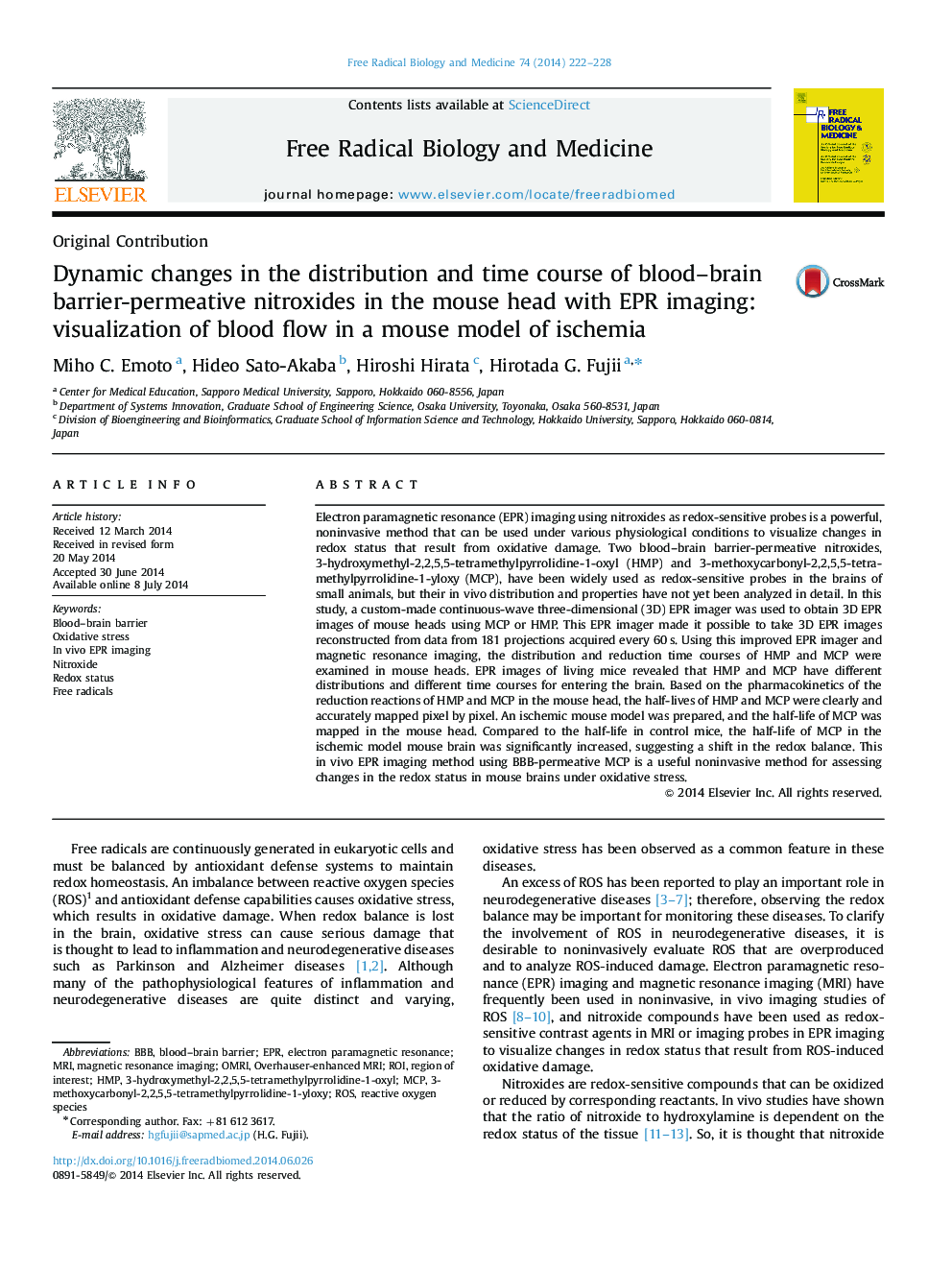| کد مقاله | کد نشریه | سال انتشار | مقاله انگلیسی | نسخه تمام متن |
|---|---|---|---|---|
| 1908307 | 1534968 | 2014 | 7 صفحه PDF | دانلود رایگان |

• Three-dimensional EPR images of mouse brains were noninvasively acquired.
• BBB-permeative redox-sensitive nitroxides were used as imaging probes.
• Different brain nitroxide distributions and reduction kinetics were visualized.
• EPR images detected redox status changes in mouse brains under oxidative stress.
Electron paramagnetic resonance (EPR) imaging using nitroxides as redox-sensitive probes is a powerful, noninvasive method that can be used under various physiological conditions to visualize changes in redox status that result from oxidative damage. Two blood–brain barrier-permeative nitroxides, 3-hydroxymethyl-2,2,5,5-tetramethylpyrrolidine-1-oxyl (HMP) and 3-methoxycarbonyl-2,2,5,5-tetramethylpyrrolidine-1-yloxy (MCP), have been widely used as redox-sensitive probes in the brains of small animals, but their in vivo distribution and properties have not yet been analyzed in detail. In this study, a custom-made continuous-wave three-dimensional (3D) EPR imager was used to obtain 3D EPR images of mouse heads using MCP or HMP. This EPR imager made it possible to take 3D EPR images reconstructed from data from 181 projections acquired every 60 s. Using this improved EPR imager and magnetic resonance imaging, the distribution and reduction time courses of HMP and MCP were examined in mouse heads. EPR images of living mice revealed that HMP and MCP have different distributions and different time courses for entering the brain. Based on the pharmacokinetics of the reduction reactions of HMP and MCP in the mouse head, the half-lives of HMP and MCP were clearly and accurately mapped pixel by pixel. An ischemic mouse model was prepared, and the half-life of MCP was mapped in the mouse head. Compared to the half-life in control mice, the half-life of MCP in the ischemic model mouse brain was significantly increased, suggesting a shift in the redox balance. This in vivo EPR imaging method using BBB-permeative MCP is a useful noninvasive method for assessing changes in the redox status in mouse brains under oxidative stress.
Figure optionsDownload high-quality image (137 K)Download as PowerPoint slide
Journal: Free Radical Biology and Medicine - Volume 74, September 2014, Pages 222–228